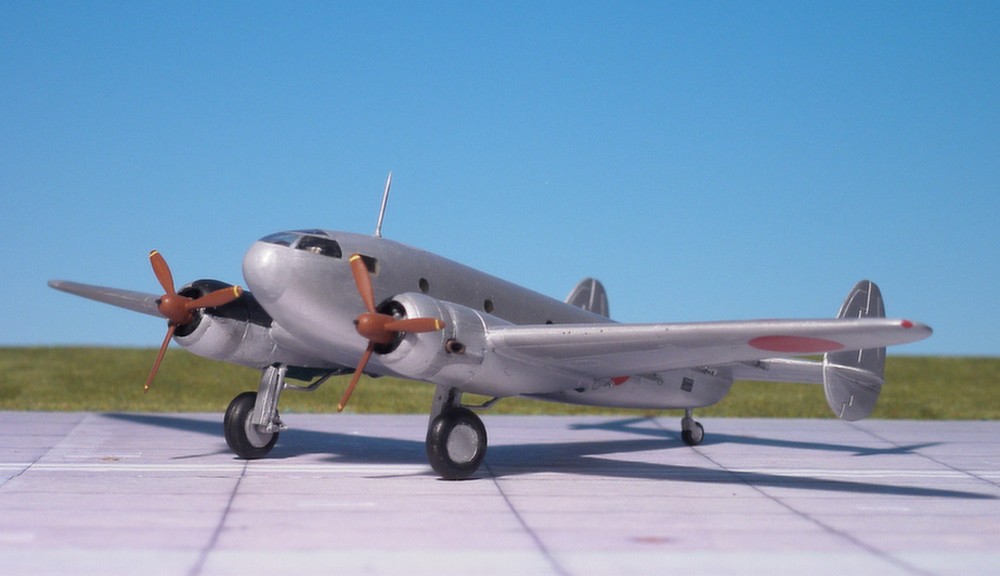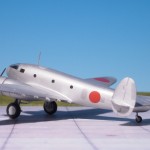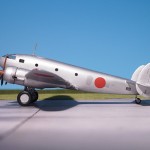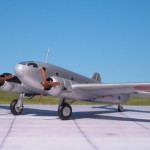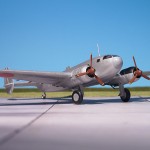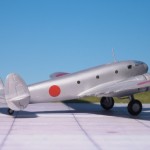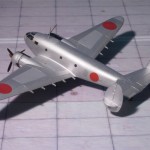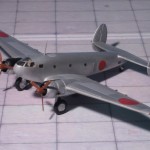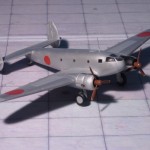TYPE: Pressurized research transport aircraft
ACCOMMODATION: Crew of six
POWER PLANT: Two Mitsubishi Ha-102 radial engines, rated at 1,080 hp each
PERFORMANCE: 295 mph at 19,030 ft
COMMENT: In 1938 the Lockheed Aircraft Corporation exported to Japan a total of thirty of their Model 14-38 twin-engined passenger transport. Twenty aircraft were delivered between March and July 1938 to Tachikawa Hikoki K.K. for eventual re-sale to Nihon Koko K.K. (Japan Air Transport Co Ltd) while a further ten aircraft were delivered direct to Nihon Koku K.K. between June and September 1938. Operated by the airline and its successor, Dai Nippon Koku, on its routes linking Japan to China, the aircraft was powered by a pair of 900 hp Wright R-1820-G3B radials. Being used throughout the war, these civilian aircraft received the Allied code name of TOBY.
Tachikawa, also having successfully negotiated a manufacturing licence with Lockheed, decided to submit to the Army a proposal covering Japanese production of a modified version. As the Army urgently required air transport to support their operations in China, this proposal was favourably received, and in 1939 Tachikawa were instructed to undertake the manufacture of this aircraft to carry military personal. Powered by two 900 hp Mitsubishi Ha-26-I radials and designated Army Type LO Transport, these aircraft were also built by Kawasaki. As the aircraft’s handling characteristics were found somewhat unsatisfactory by Army pilots, Kawasaki were instructed to redesign the aircraft, and eventually this led to the production of the Kawasaki Ki-56. Despite its shortcomings, the Army Type LO Transport, known as THELMA to Allied forces, was operated until the Japanese surrender.
In late 1940, Tachikawa undertook to produce an experimental aircraft specifically for pressurization experiments. To speed up work, the wings, rear fuselage section and tail surfaces of the Army Type LO Transport were retained, and a shorter pressurized forward and centre fuselage section was designed. Of cylindrical cross section, the new forward fuselage had no windscreen step, and other modifications included the replacement of the Type LO power plants with two 1,080 hp Mitsubishi Ha-102 radials. Designated Tachikawa SS-1, the aircraft was completed in May 1943 and during its brief trials proved valuable data on cabin pressurization (Ref.: 1).
